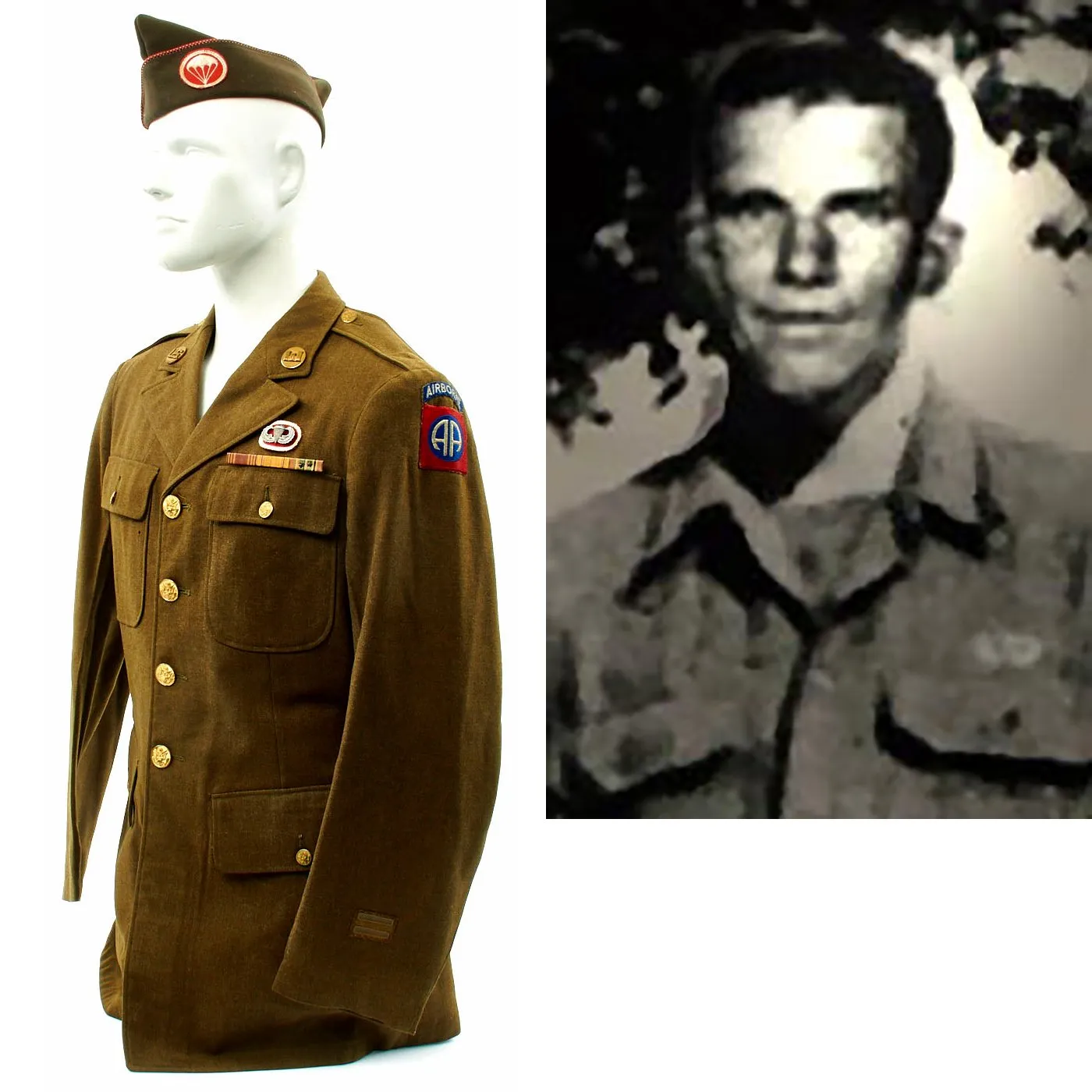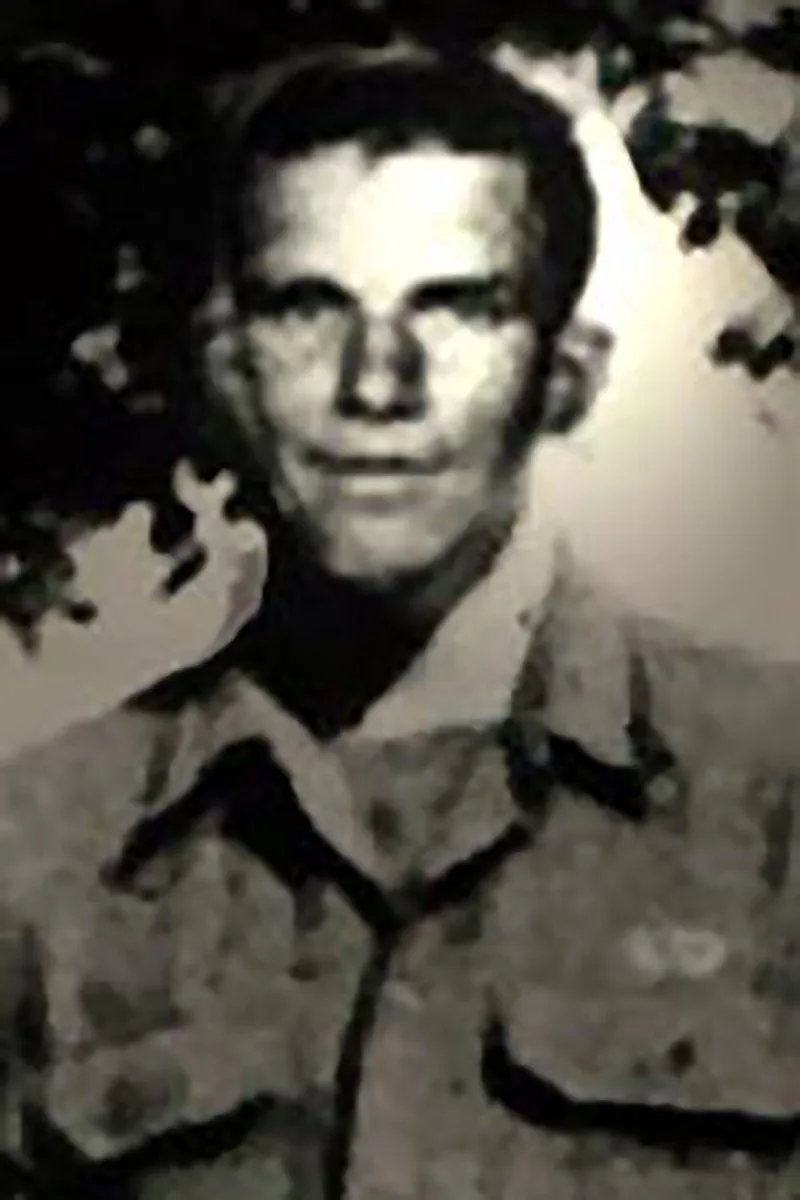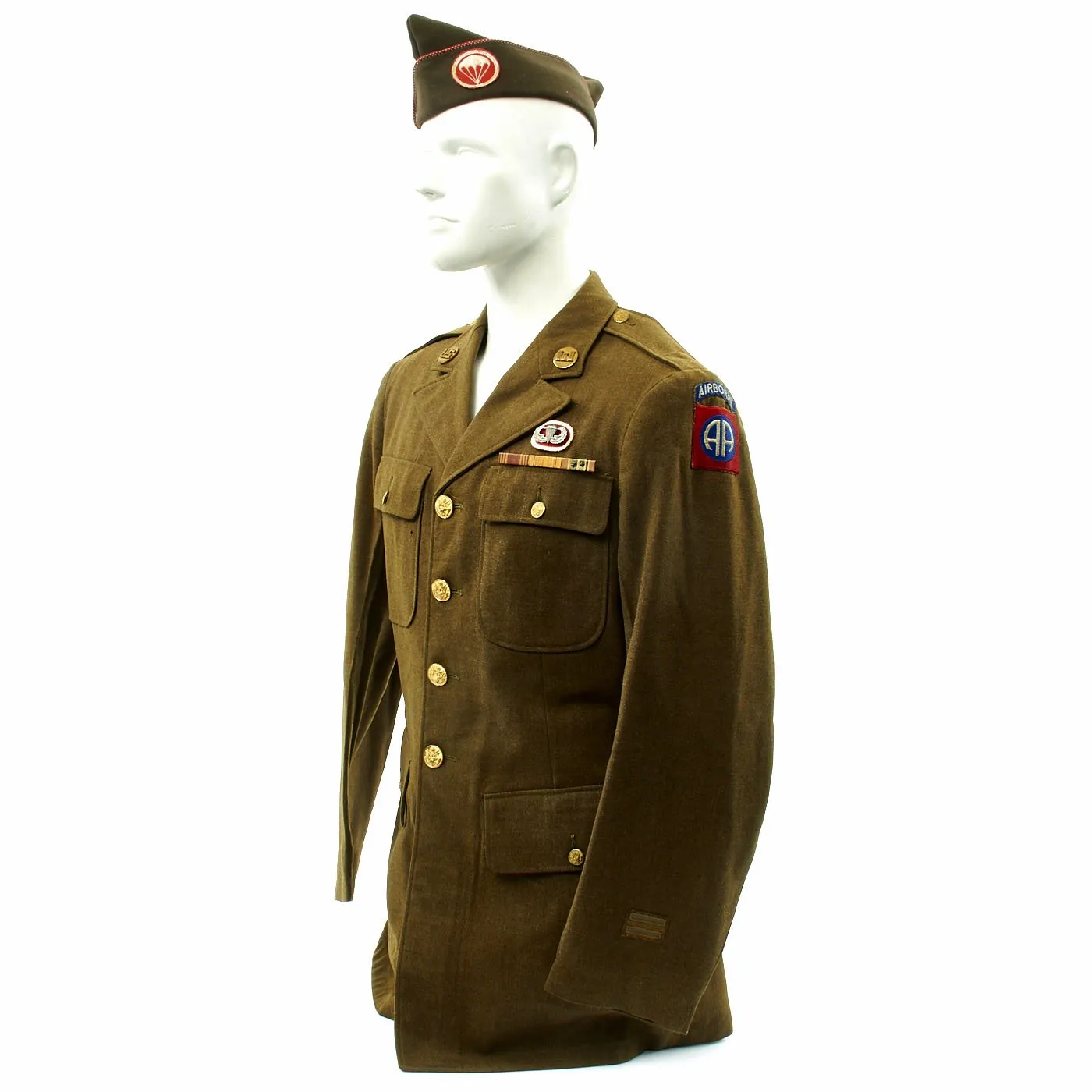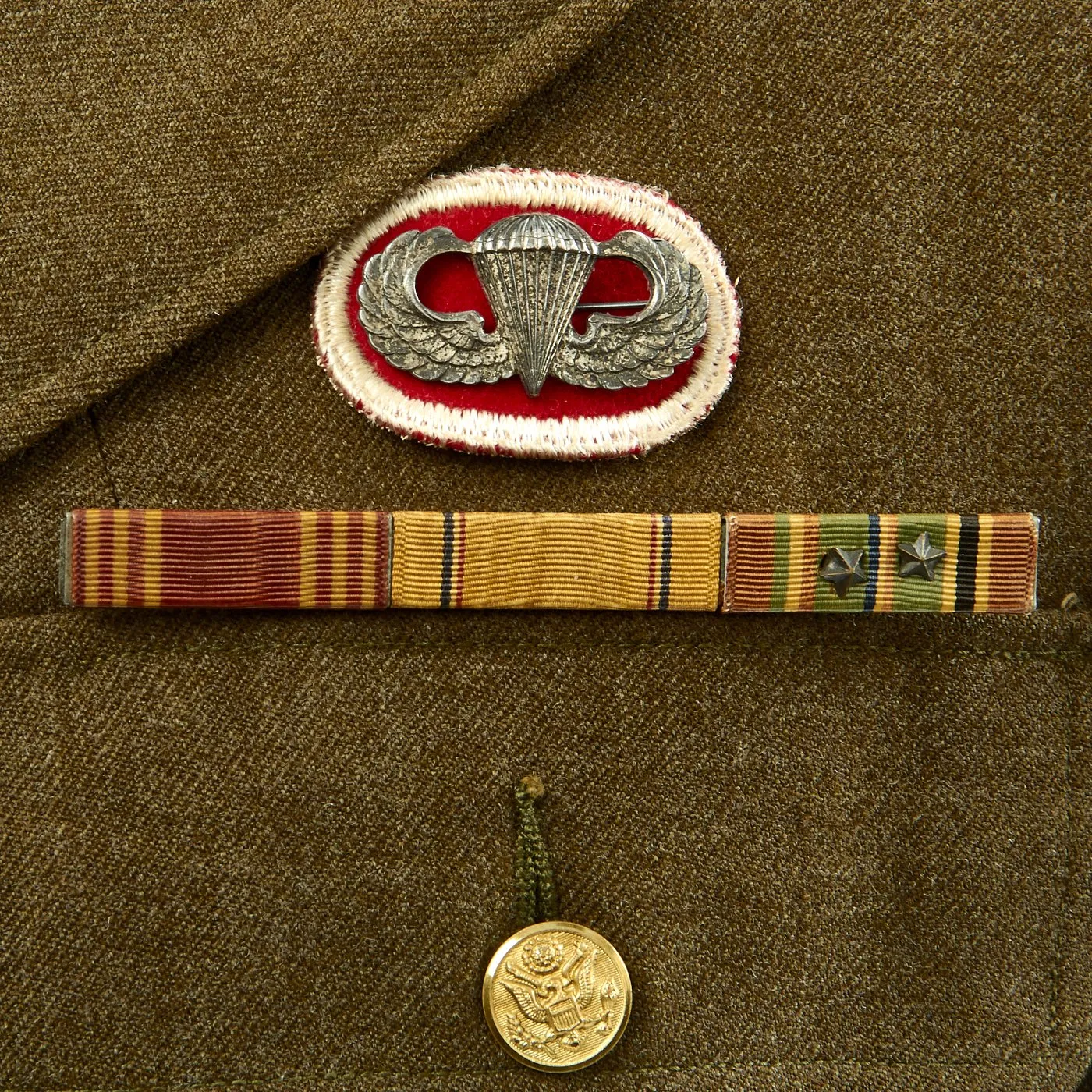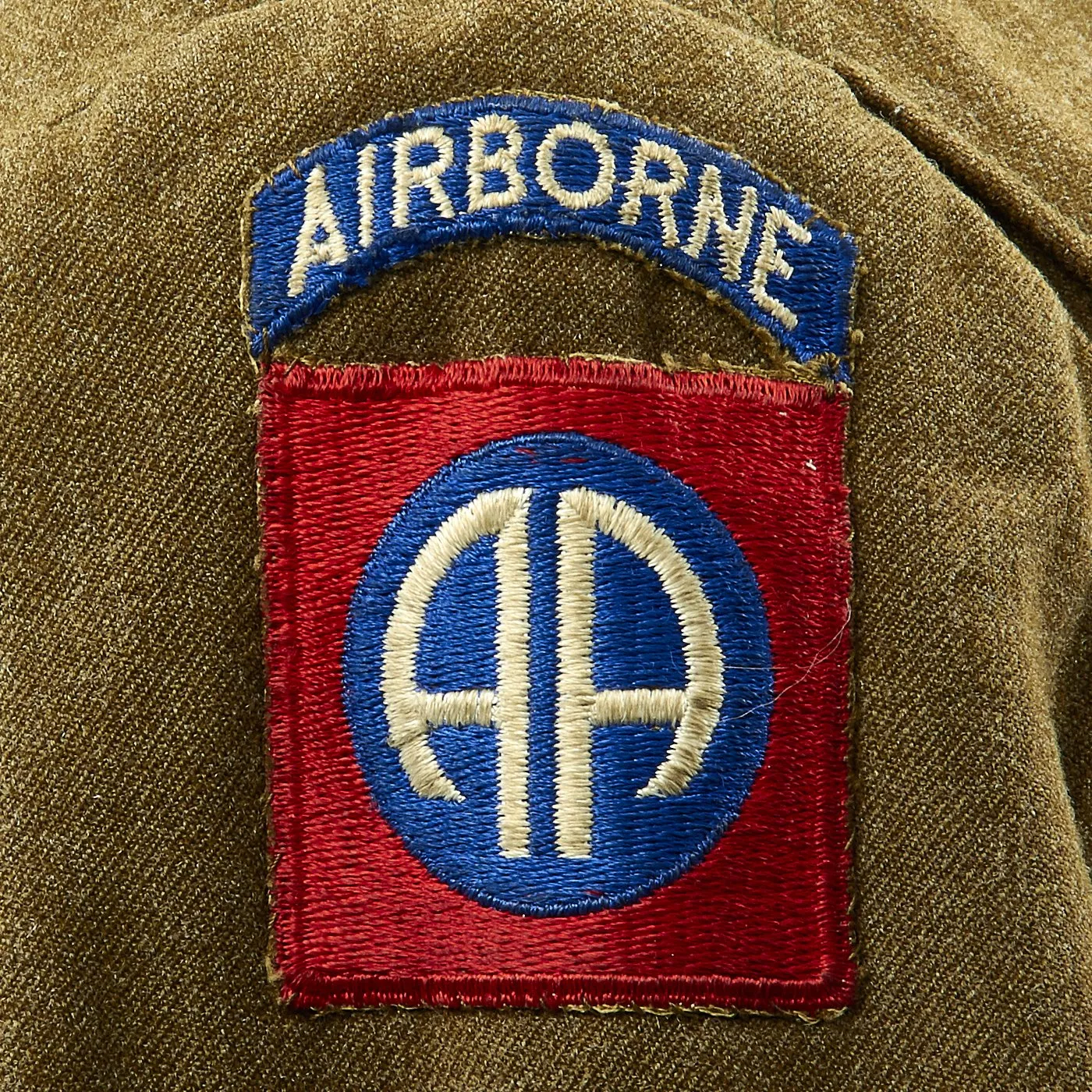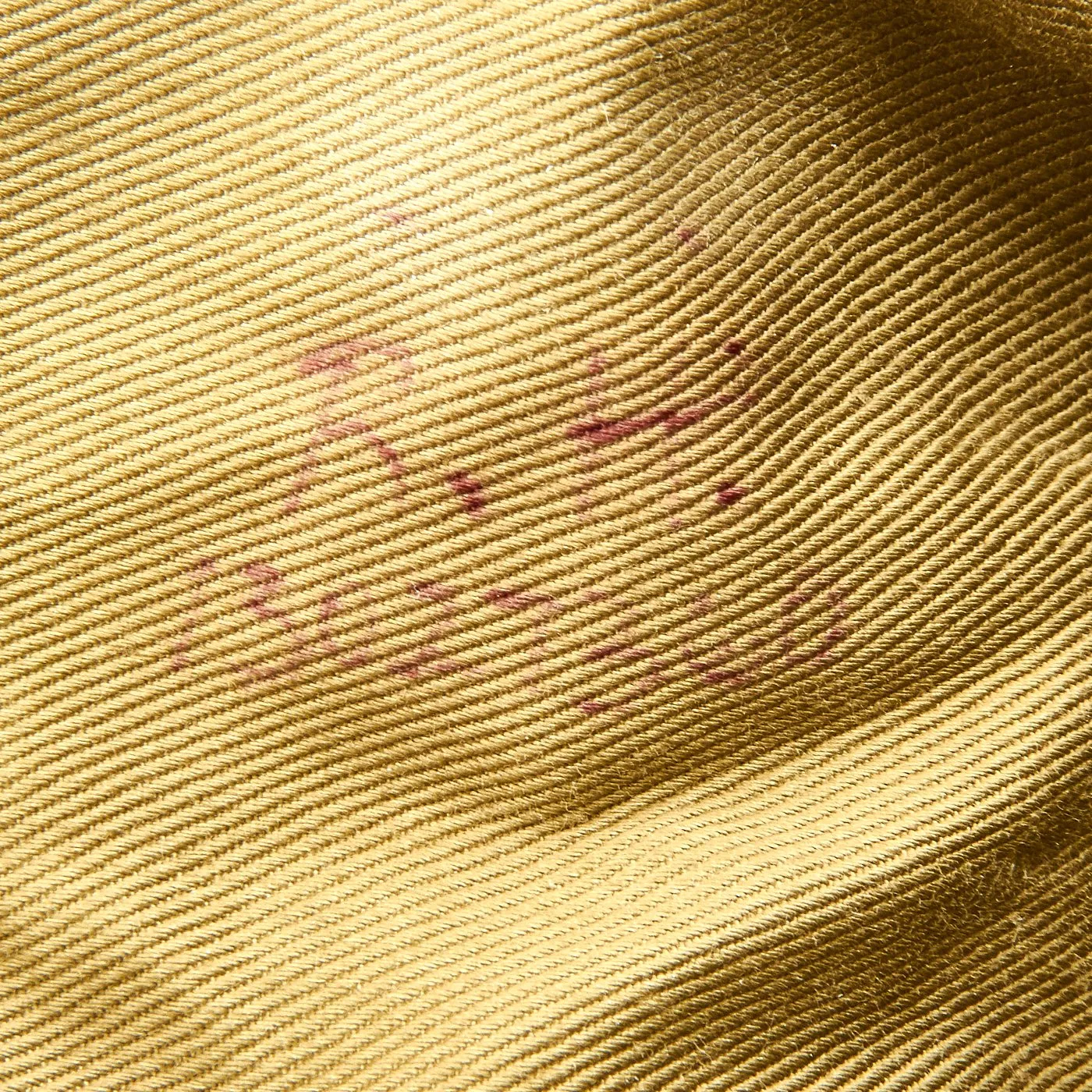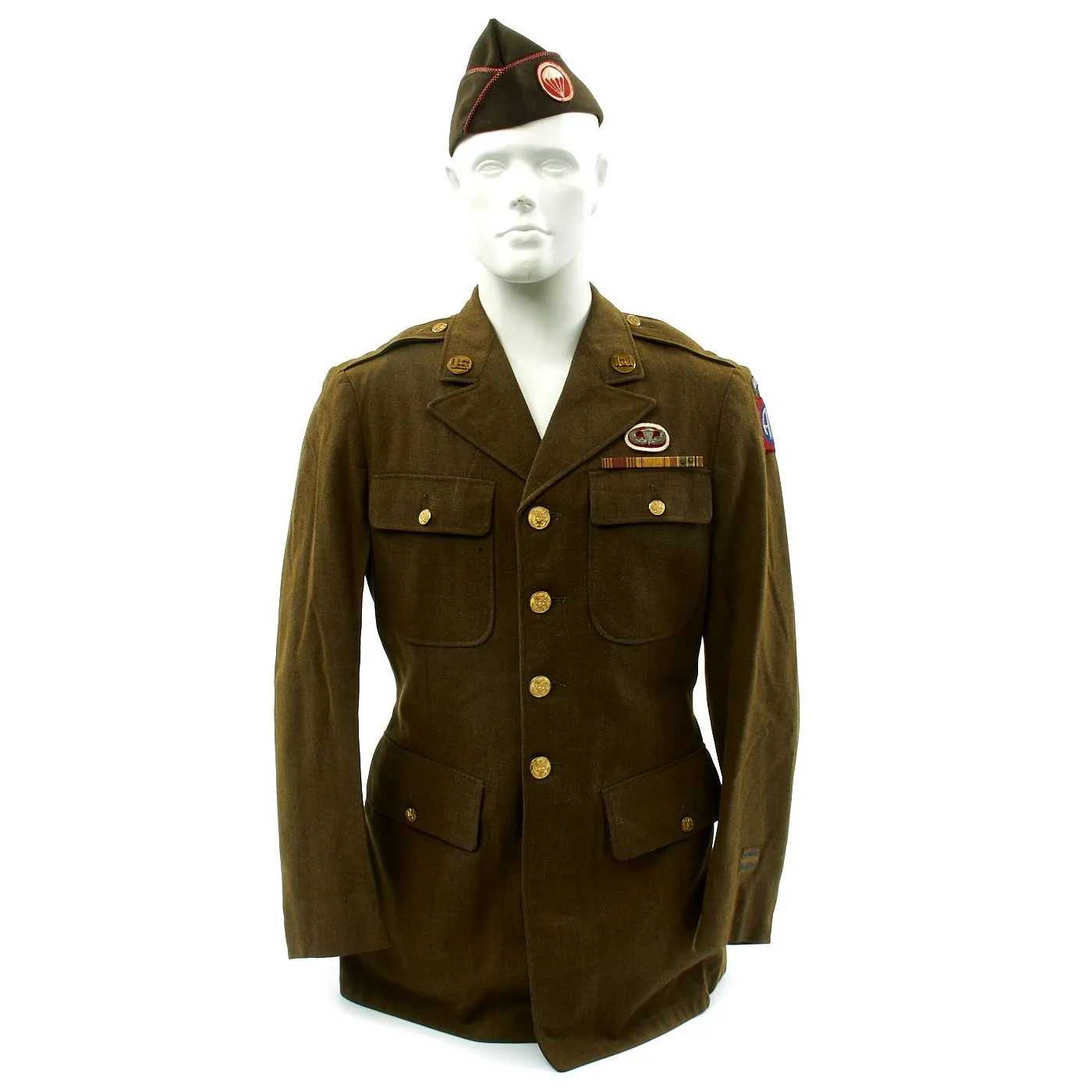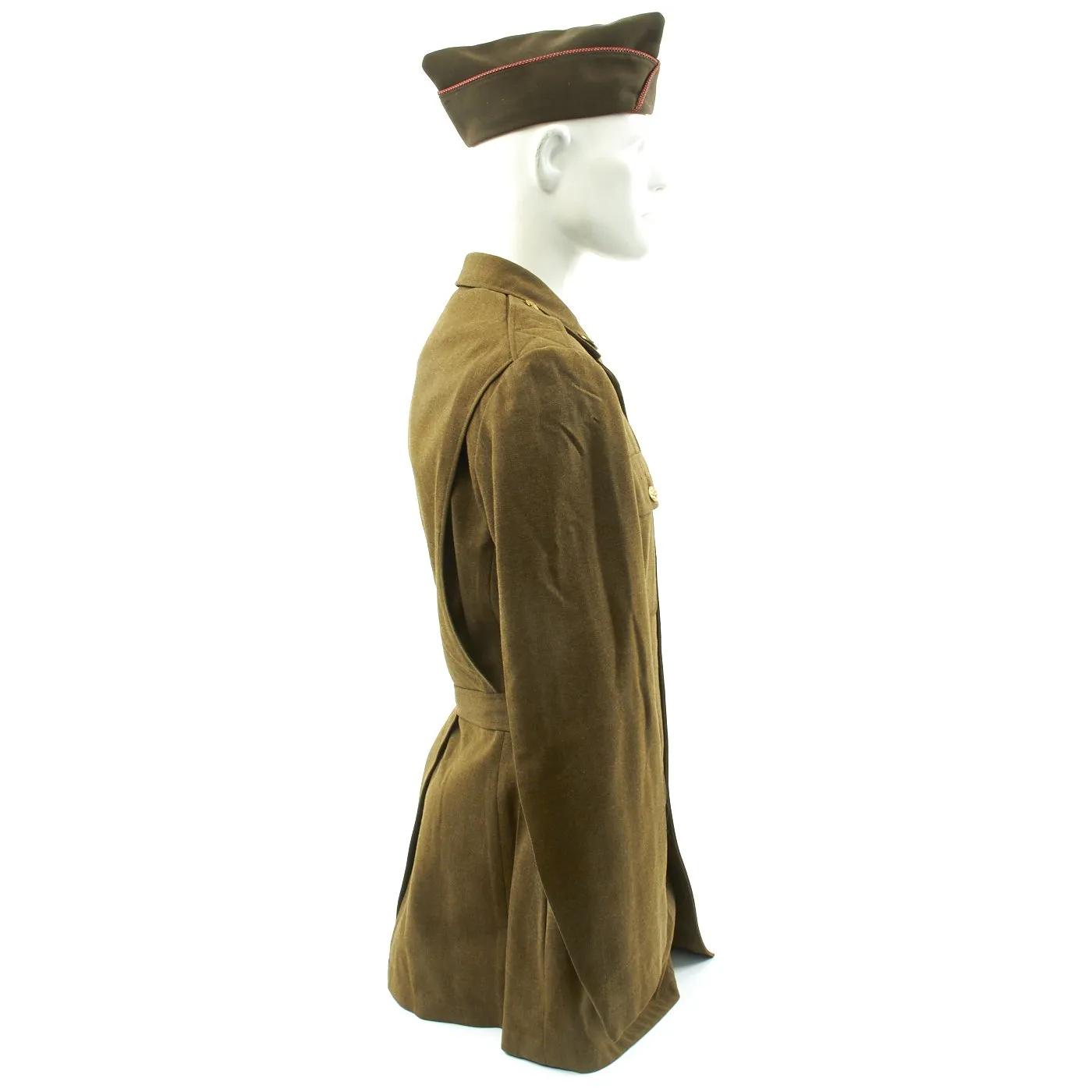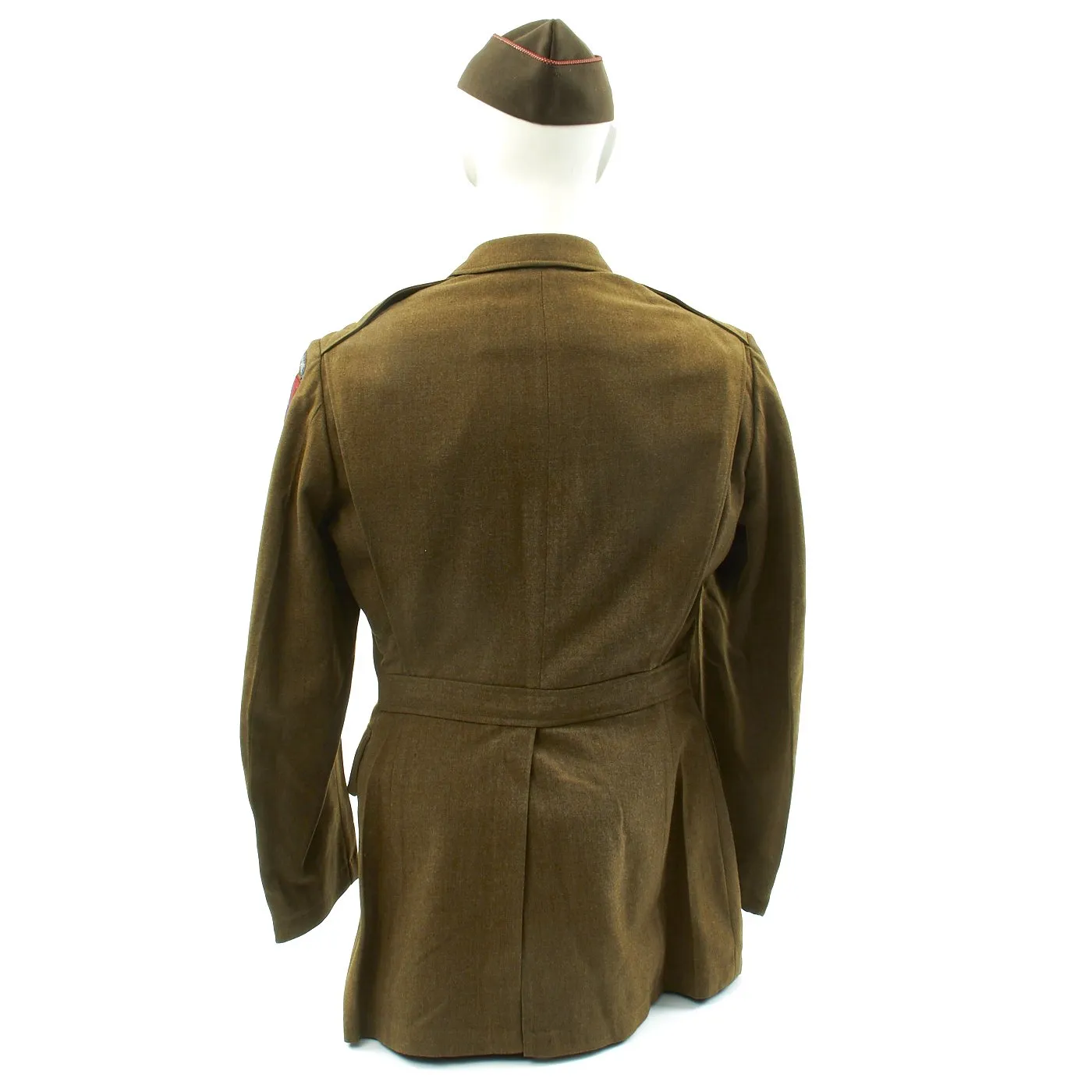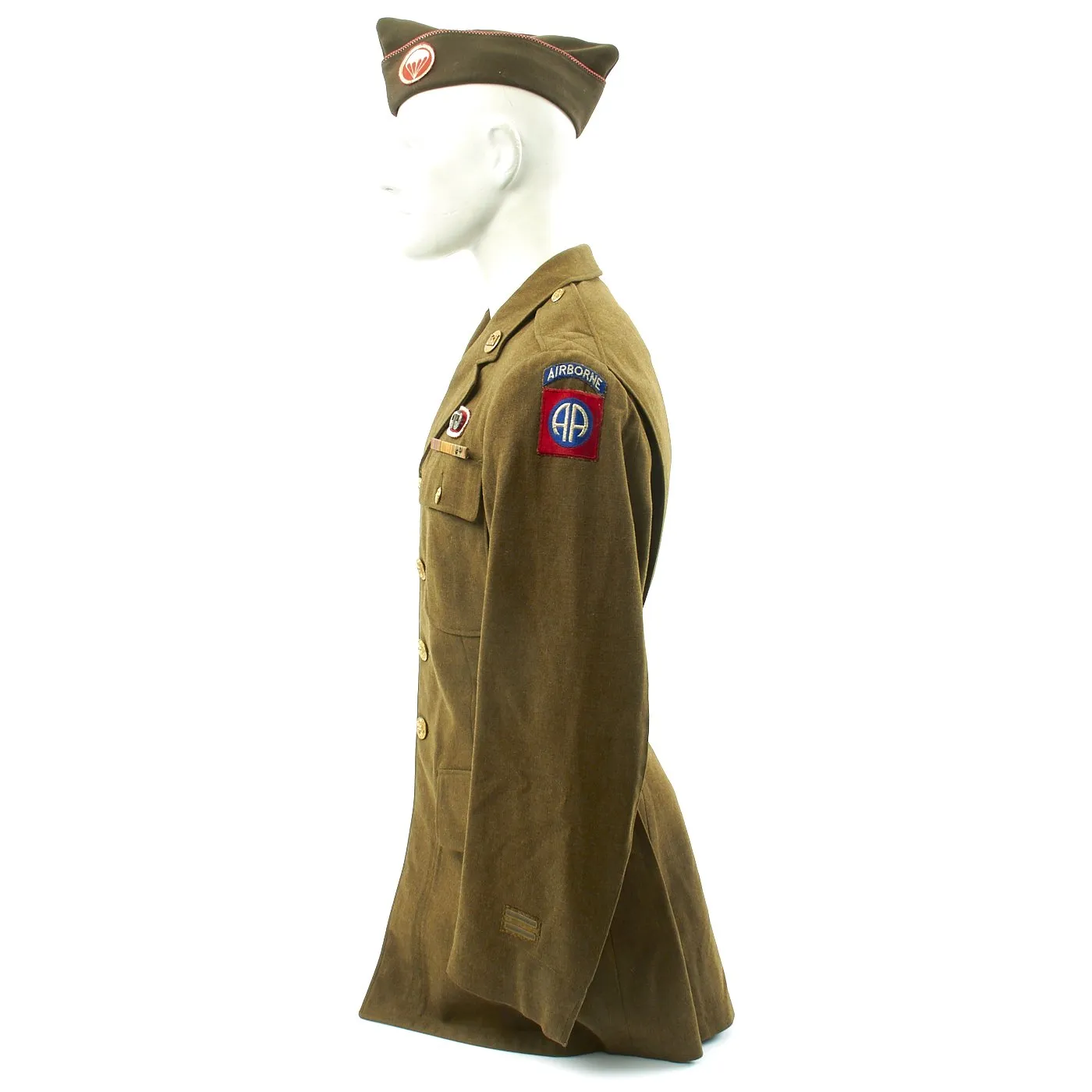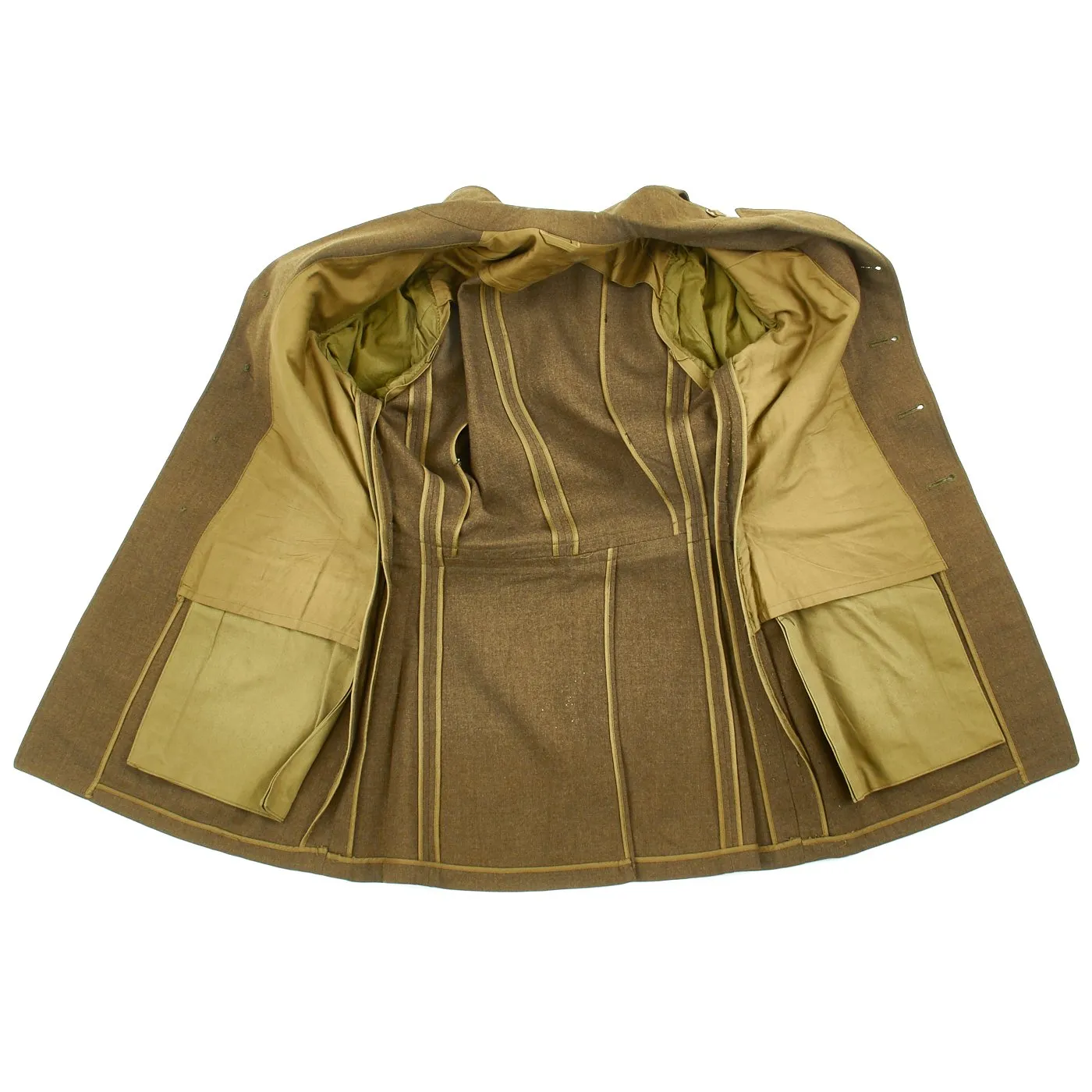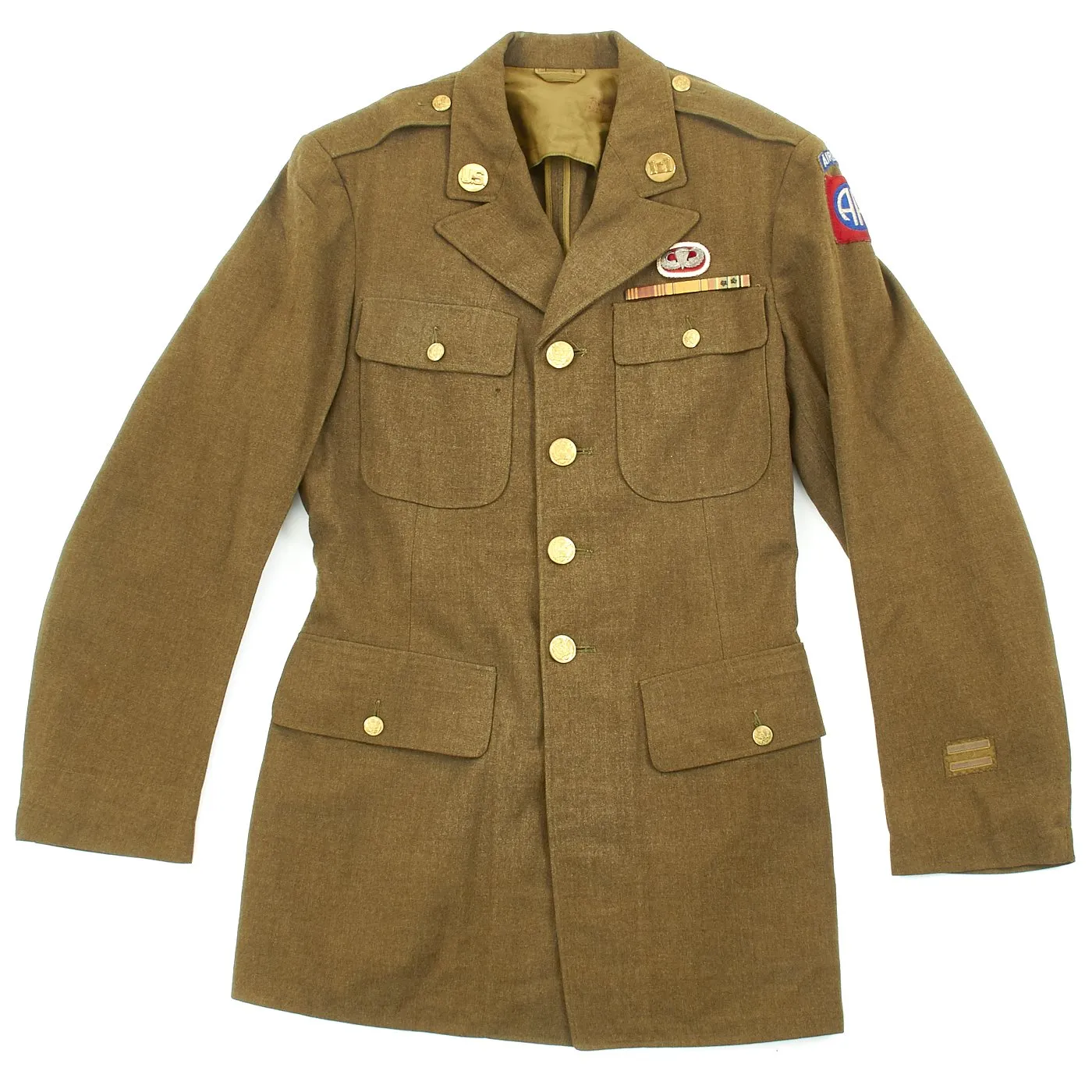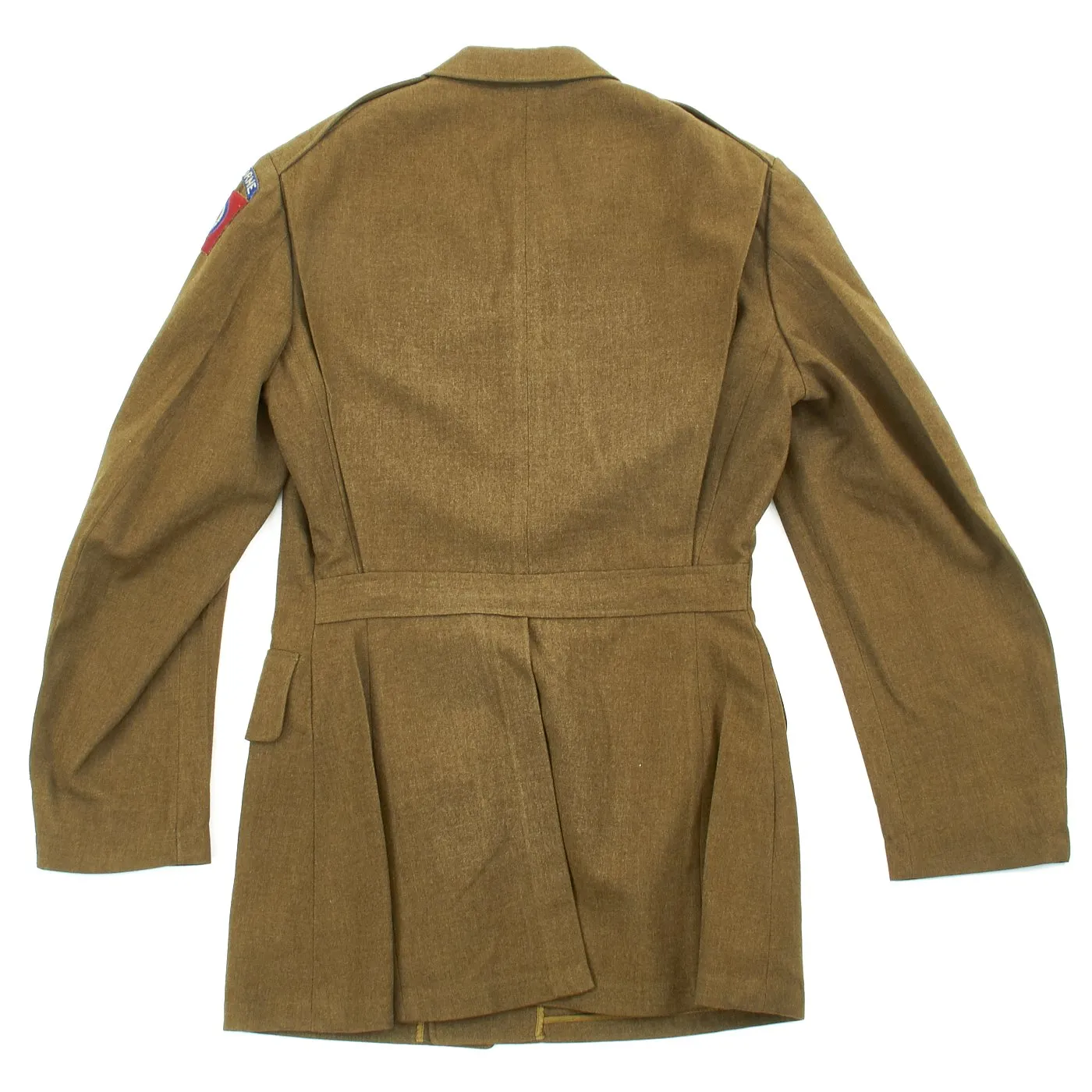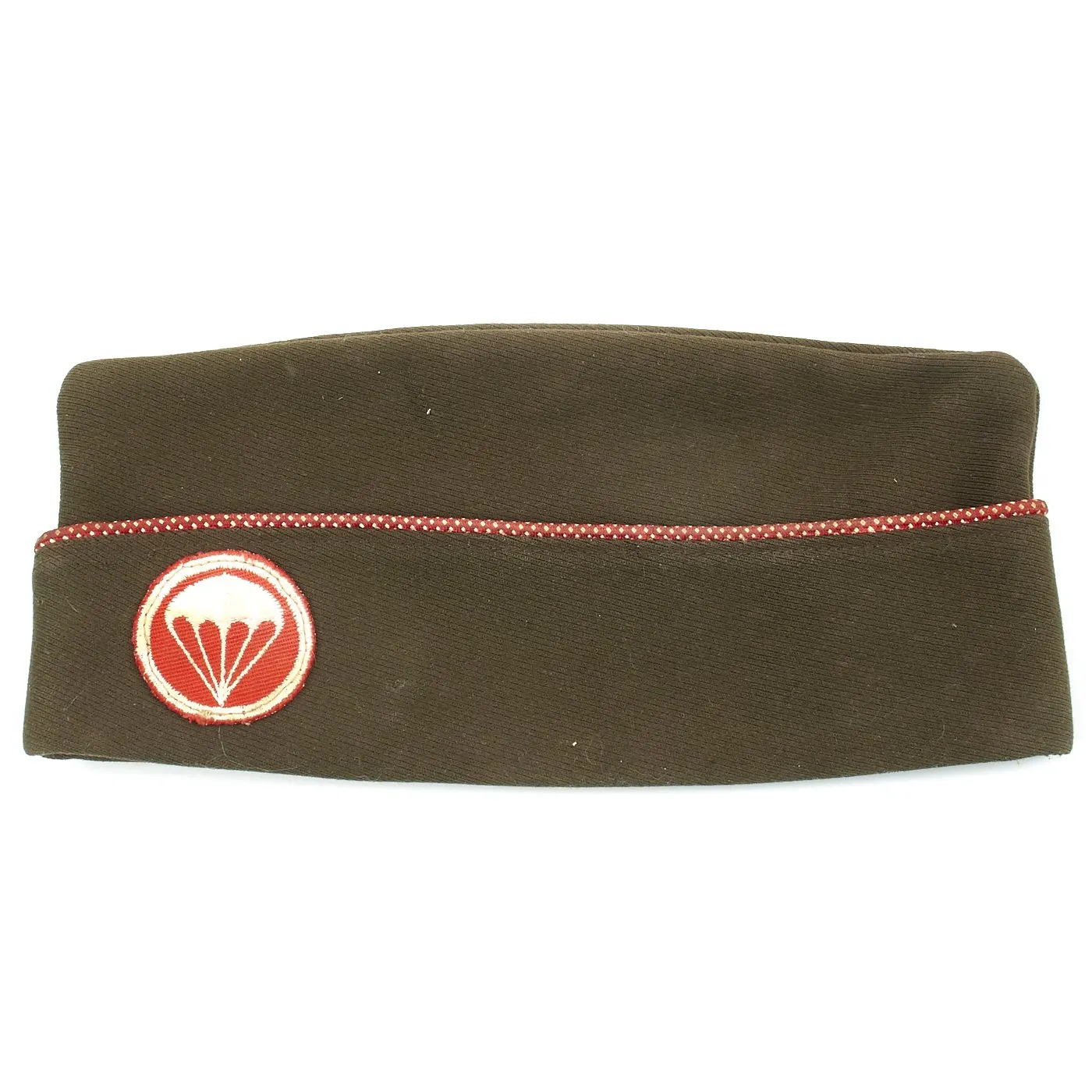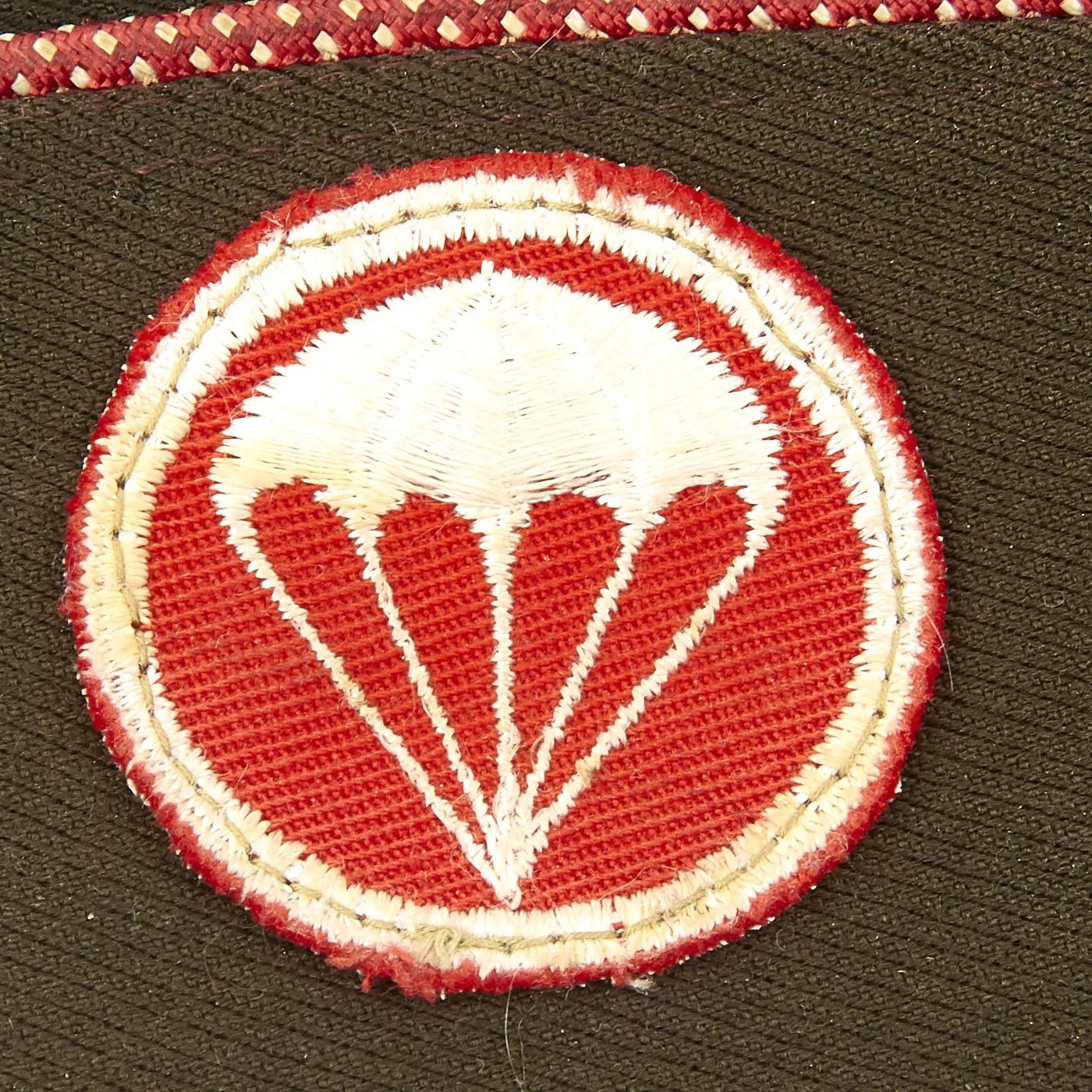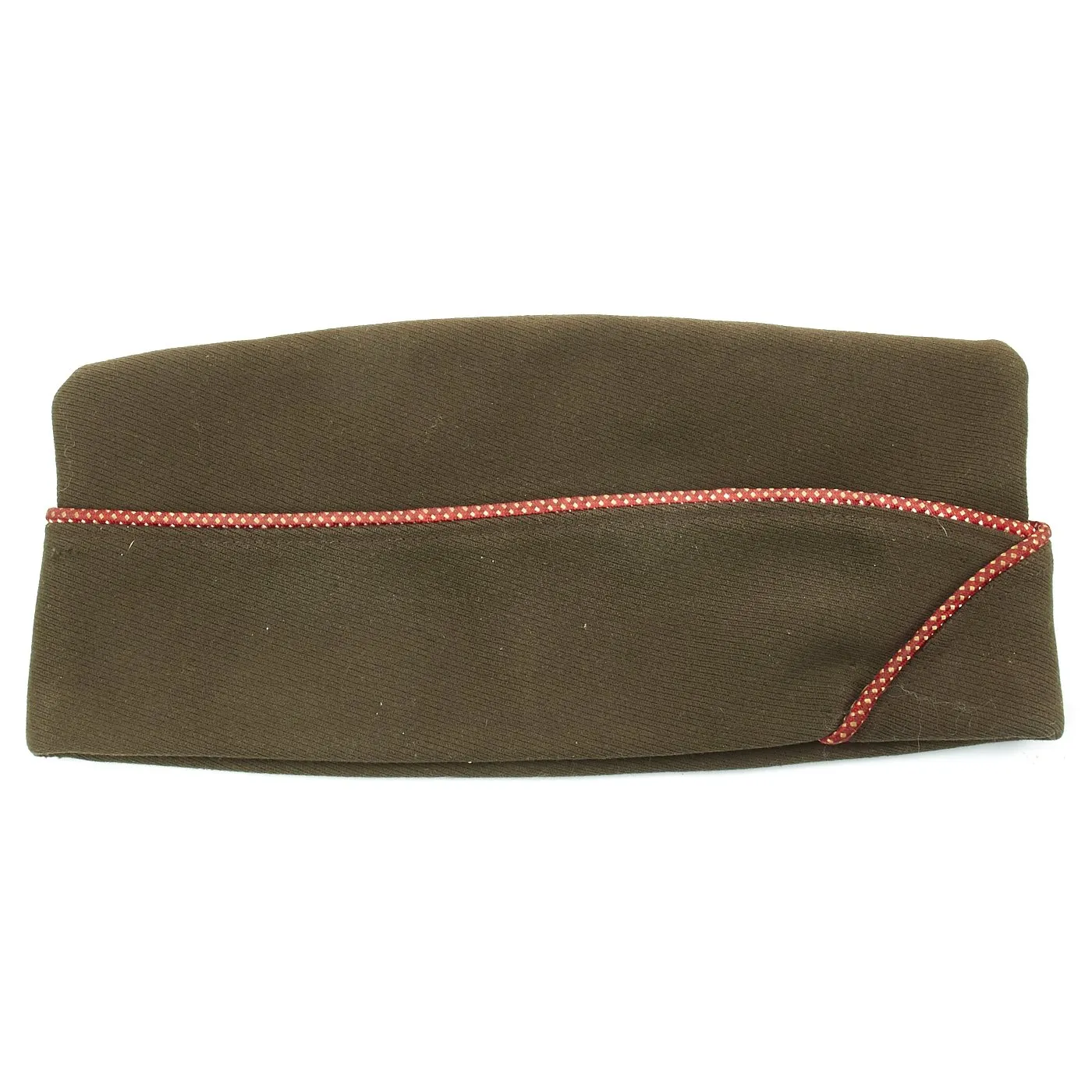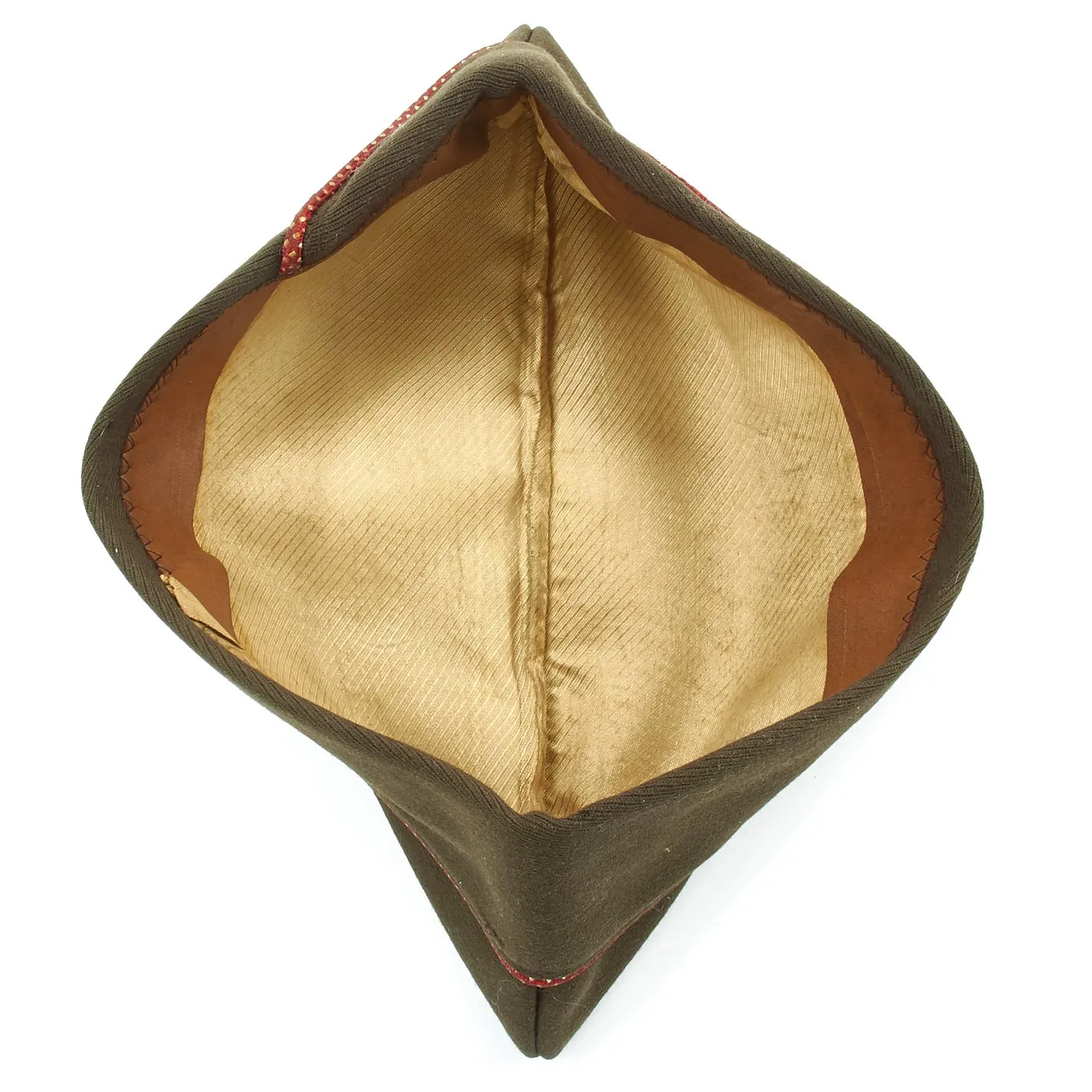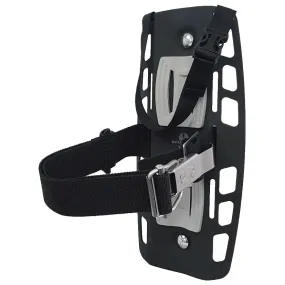Original Item: One-of-a-kind. Private Robert K. Hause (ASN: 13027360) enlisted on April 1st, 1941 in Philadelphia. He served with B Company, 307th Airborne Engineer Battalion, 82nd Airborne Division when he jumped into Normandy on D-Day. On June 6th, 1944 he was captured by German forces and taken to Stalag VIII-D in Czechoslovakia (Czech Republic), where, as a POW, he was shot in his barracks on October 27th, 1944 for refusing to work under extremely dangerous conditions in the coal mines. He was buried temporarily in St. Avold, France and later interred at Arlington Memorial Park in Whitehall, Lehigh County, Pennsylvania, USA.
A photo of him documenting his D-Day jump and capture can be found at think on the 82nd airborne history website and he is listed in the honor roll of the 307th Engineer Bn at this .
His grave can be found at this .
He is also mentioned on the Airborne Normandy website this .
This Winter Service Coat in size 39L features the classic four pocket design and is named on the interior R.H. 13027360. It features sterling silver paratrooper jump wings, 307th Airborne Engineer Battalion felt jump oval, 82nd Airborne patch to the left shoulder, and media ribbon bar with God Conduct, American Defense and European–African–Middle Eastern Campaign Medal with 2 Campaign Stars (Sicily and Salerno). Left sleeve has two overseas service bars indication 12 months of overseas service. Coat is offered in very good condition.
Also included is an airborne artillery overseas garrison cap with correct red piping and red parachute patch and a research binder which includes copies of Hause's service record, photo, and other research.
Airborne material from D-Day invasion troops is rare, especially one that was captured on D-Day and subsequently killed as a POW.
Stalag VIII-D was a German World War II prisoner-of-war camp (Stammlager) located at the outskirts of Teschen, (now Český Těšín, Czech Republic). It was built in March 1941 on the grounds of a former Czech barracks.[1] It was later known as Stalag VIII-B.
The camp was created in 1941 as the base camp for a number of work-camps (Arbeitskommando) for prisoners of war working in the mines and industries of Upper Silesia. By early 1942 they housed 7,000 prisoners from Belgium, France, Poland and Yugoslavia. In June 1943 it was placed under the administrative control of Stalag VIII-B Lamsdorf and was renamed Stalag IV-B/Z. In November 1943 there was another reorganization, Lamsdorf was renamed "Stalag 344", and a large number of prisoners were transferred to Teschen, which became Stalag VIII-B.[4] Because of these organizational and number changes there is considerable confusion in accounts of prisoners, even in official German records.
At the end of 1943 within Stalag VIII-B Teschen there were about 50,000 Soviet prisoners, and another 10,000 from other countries,[3] including Great Britain, the Commonwealth and Italy. In general, the conditions in the main Teschen camp and in all the sub-camps were deplorable.
Among the sub-camps of Stalag VIII-D Teschen was Kommando E535 - Milwitz Coal mine "Milwitzgrube" SOSNOWITZ - Milowice (Sosnowiec) , mainly New Zealanders.
On 25 March 1942 the 307th Engineer Battalion was ordered into active service at Camp Claiborne, Louisiana as part of the 82nd Infantry Division under the command of General Omar Bradley. Later the same year on August 15th the Battalion was redesignated the 307th Airborne Engineer Battalion of the 82nd Airborne Division. The Battalion's first combat action would come 11 months later.The 307th AEB consisted of three Companies at this stage: Battalion Medical Company, Two Companies of Engineers B & C. D Company was created after Normandy from parts of B & C to support the 508th for the duration of the war. A Company also came into being to support the 325 Glider Infantry Regiment.
Sicily - Operation Husky
The 505th PIR and 307th Company B was scattered in their drop over Sicily on July 10th. A group of Engineers from Company B were plugged into the line at Biazza Ridge on July 11th. The rest of the Engineers were mis-dropped deep behind German lines.
After a day of heavy fighting, Patton decided to reinforce his battle-weary center with over 2,000 additional paratroopers from his reserves in North Africa. He ordered that the 1st and 2d Battalions, 504th Parachute Infantry Regiment (PIR), the 376th Parachute Field Artillery Battalion (PFAB), and Company C from the 307th Airborne Engineer Battalion be dropped near Gela on the night of 11 July. German aircraft had been active over the American sector all day, and consequently senior Army and Navy officers went to great lengths to inform everyone of the impending nighttime paratroop drop lest overanxious gunners fire on the friendly aircraft. Officers of the 307th AEB Company B in Naples circa Fall 1943 (Courtesy: Brian Siddall) Nevertheless, when the transport planes arrived over the beaches in the wake of a German air raid, nervous antiaircraft gunners ashore and afloat opened fire with devastating effect. Allied antiaircraft guns shot down 23 and damaged 37 of the 144 American transport planes. The airborne force suffered approximately 10 percent casualties and was badly disorganized. Later investigation would reveal that not everyone had been informed of the drop despite the Seventh Army's best efforts.
After Sicily the 504th PIR,the 376th PFAB and Company C 307th Airborne Engineer Battalion were formed into the 504th Regimental Combat Team (RCT) and fought together throughout the rest of World War II. Similarily, the 505th PIR, the 456th PFAB and Company B 307th Airborne Engineer Battalion were formed into the 505th Regimental Combat Team (RCT).
Salerno - The Oil Drum Drop
At 0330 on 9 September 1943 the amphibious landings at Salerno began. The Allied hold on the beachhead became tenuous when, on 12 September, the Germans launched a successful counterattack. The situation became so critical that Gen. Mark Clark ordered the 82nd to prepare to drop directly on the beachhead (see map). In order to guide the C-47 pilots to the shrinking dropzone, oil drums filled with gasoline soaked sand were ignited every 50 yards when signaled. On the night of 13 September, 1300 504'rs took off and parachuted on to a dropzone that was a mere 1200 yards long and 800 yards wide south of the Sele River near Salerno. The sight of the paratroopers floating down gave the defending troops a morale boost as well as badly needed reinforcements. On the following evening the 505th PIR repeated the drop onto the Salerno beachhead. The days that followed were, in the words of General Mark Clark, Commander of the 5th Army, "responsible for saving the Salerno beachhead." As the 504th (minus 3rd Battalion) took the high ground at Altavilla, the enemy counterattacked and the Commander of 6th Corps, General Dawley, suggested the unit withdraw. Epitomizing the determined spirit of the Regiment, Colonel Tucker vehemently replied, "Retreat, Hell! -- Send me my other battalion!" The 3rd Battalion then rejoined the 504th, the enemy was repulsed, and the Salerno beachhead was saved. By 18 September the Germans withdrew, conceding the success of the landings.
"Leg Infantry"
To outflank the German defenses along the Gustav Line, an amphibious invasion at Anzio was planned. Assigned as part of the invasion force was the 504th Regimental Combat Team (RCT). The 504th had been fighting as "leg infantry" during the advance towards Rome until pulled from combat on 4 January 1944 to prepare for the Anzio operation. The 504th RCT was assigned to seize the town of Borgo Piave on 24 January. Although successful they were soon driven out by German tanks and artillery. They then held a defensive position along the Mussolini Canal until relieved on 28 January. After withdrawal the third Battalion, 504th PIR was assigned to the 1st Armour Division, while the remainder of the PCT was assigned to the 3rd Infantry Division. The 3/504th soon saw intensive combat fighting off a German counterattack. As a result of this action they became the first US parachute unit to receive a Presidential Unit Citation.
Rejoined by the decimated 3rd Battalion the 504th PCT was soon back in their defensive positions on the right flank where they carried out aggressive small unit infiltration patrols across German lines. This demoralized the Germans as was noted by a German officer who referred to them as "Devils in Baggy Pants", a name proudly carried by the 504th until this day.
In late March the 504th was withdrawn to England to rejoin the 82nd Airborne. Since their amphibious landing at Anzio, the 504th battled the elite units of the Herman Goering Division, the 3rd Panzer Grenadier Division and the 16th SS Panzer Grenadier Division. Consequently, due to its depleted state following the fighting in Italy, the 504th Parachute Infantry Regiment did not take part in the D-Day invasion.
D-Day
The largest combined military operation in history,"D-Day", was to be spearheaded by the 82d and 101st Airborne Divisions. Visibility was hampered by poor weather conditions as the C-47's crossed the English Channel during the first hours of the 6th of June 1944. Officers of the 307th AEB Company B in England prior to D-Day (Courtesy: Brian Siddall) When the troop carriers finally did made landfall on the Cherbourg Peninsula they came under heavy German flak scattering many of the troop carrier flights. It was 0300 hours on 6 June 1944, when the 505th RCT were given the green light to jump. Some Pathfinders were able to signal their dropzones. However, many of the troop carriers missed their dropzones and the All-Americans of the 505th RCT began landing across a large swath of the countryside around Normandy. For their performance in the invasions Company B of the 307th AEB was awarded the Presidential unit citation.
Operation Market Garden
On 9 September 1944 Field-Marshal Montgomery proposed a plan, called Operation Market Garden, to secure a bridgegehead across the Rhine. The operation called for a combined armor and airborne assault to seize and hold key bridges and roads deep behind German lines in Holland. The airborne phase of the operation consisted of capturing five bridges ahead of the armored force. The 504th now back at full strength rejoined the 82nd, while the 507th went to the 17th Airborne Division.
The 504th's mission was to capture two bridges across the Maas-Waal Canal. The operation began on 17 September. The 504th quickly secured one of the most important objectives, the nine-span bridge over the Maas River, by hitting both ends simultaneously.
On 20 September the 504th carried out an heroic assault crossing the Waal. With artillery support the first wave of the 504th assaulted, in twenty-six assault boats, under intense fire, taking 200 casualties in the process. Finally on D 4 the 504th finally secured their hold on the bridge, fighting off another German counterattack just before noon. It was in this skirmish that Pvt. John Towle won the Medal of Honor.
The Regimental motto, "Strike Hold," had never before been more forcefully demonstrated on the battlefield. The 504th, tired yet determined, had gallantly kept its commitment to accomplish every mission without ever relinquishing any ground it had once occupied.
Its success, however, was short-lived because of the defeat of other Allied units at Arnhem. The gateway to Germany would not open in September 1944, and the 82nd was ordered back to France.
Battle of the Bulge - The Ardennes Offensive
Suddenly, on December 16, 1944, the Germans launched a surprise offensive through the Ardennes Forest which caught the Allies completely by surprise. Two days later the 82nd joined the fighting and blunted General Von Runstedt's northern penetration in the American lines.
Members of the 307th AEB defuse a German Mine - May 1945On the morning of 19 December the 504th was getting into position north of Bastogne, while the 101st Airborne Division was assigned to Bastogne itself. The Germans quickly infiltrated and cut off the road between the two elements and the "Battle of the Bulge" offensive flowed around the two airborne units. The 82nd as a whole faced great difficulty in holding position along the northern edge of the German penetration. The 504th faced particularly heavy German attacks, winning their second Presidential Unit Citation in the process.
Driving deep into the heartland of Germany, the 504th finally took up positions along the West Bank of the Rhine River. Then on 6 April 1945 A Company crossed the Rhine near the village of Hitsdorf as a diversionary tactic to mislead the Germans from the full scale crossing. The fierce fighting which ensued won A Company a Presidential Unit Citation.
Occupation
The war offically ended in Europe on 5 May 1945 and the 82nd Airborne Division was called upon to serve as the occupation force in the American Sector of Berlin. Here the 82nd Airborne Division earned the name, "America's Guard of Honor," as a fitting end to hostilities in which the 504th had chased the German Army some 14,000 miles across the European Theater.
The 307th was the first Airborne Engineer Battalion and participated in 8 campaigns during World War II.




